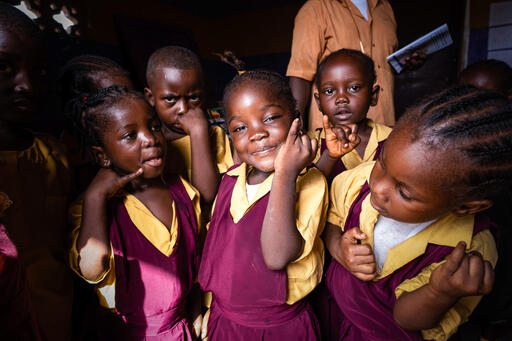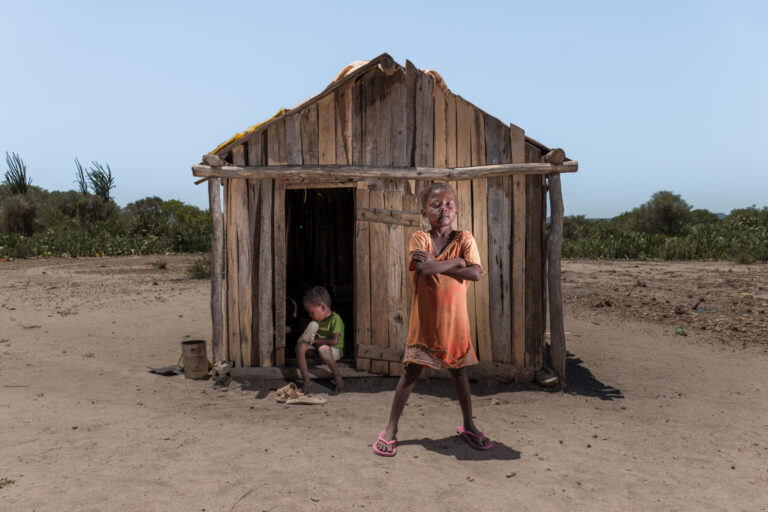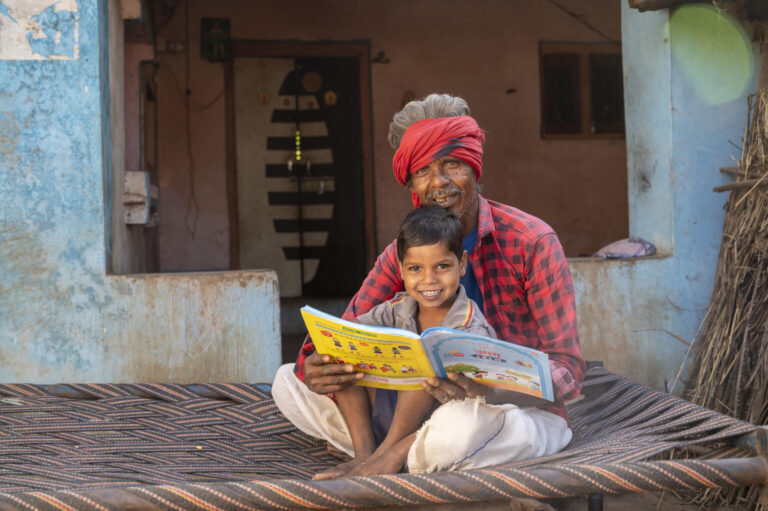Vaccines save the lives of an estimated three million children per year. They have had a significant impact on the reduction of child mortality over the past two decades and have shielded humanity from some of the most threatening diseases in history. Recently, we’ve witnessed the power of vaccines to prevent deaths and reduce hospitalizations in a years-long battle with COVID-19 – but only if people have access to them.
Global coverage levels of childhood vaccines rose rapidly from the 1980s to the 1990s because of unprecedented political commitment, successful scale up of the Essential Program on Immunization (EPI) in many low-and middle-income countries, and the dedication of substantial resources to ending vaccine preventable child deaths. After the 1990s, coverage levels continued to increase but at a slower pace, reaching an estimated 86 per cent for the third dose of diphtheria, tetanus, and pertussis (DTP3) in 2019 (3). In the past thirty years, significant innovations in immunization also occurred including the development of new vaccines against the three leading infectious killers of children – diarrhea, pneumonia, and malaria (4) – and against the human papillomavirus, which can cause cervical cancer.
Vaccine services haven’t bounced back equally, leaving many children unprotected
Yet, the picture for immunization is not all rosy. The stagnation in global coverage levels was already troubling before the pandemic hit in 2020 and reflected pervasive patterns of inequities in access and uptake of immunization services across and within regions and countries. WHO/UNICEF estimates of national immunization coverage (WUENIC) show that global coverage levels of DTP3 dropped from 86 to 83 percent between 2019 and 2020, translating into about 23 million children missing out on vaccines. This number represents 3.7 million more children missing out on vaccination in 2020 compared to 2019 and is an alarming reversal of progress (3).
Although disruptions in immunization services and campaigns were most pronounced in the first year of the pandemic, many low- and middle-income countries were still experiencing disruptions at the end of 2021. UNICEF’s COVID-19 pulse survey conducted in quarter three of 2021, for example, showed that about half the countries that responded reported some level of immunization service disruptions (5). Similarly, the WHO COVID-19 pulse surveys show substantial recovery of immunization services in 2021 compared to 2020 but persisting service disruptions in over one third of countries surveyed (6). Other concerning news are the ongoing delay of at least one campaign in 31 countries as of 1 April 2022 (7), reports of large measles outbreaks in at least 19 countries during the past 12 months, and recent polio outbreaks in Uganda and Malawi occurring after Africa declared itself free of wild poliovirus in 2020 (8)(9). These disturbing events are an alarm bell that the time to restore immunization services and address immunity gaps is now.
Partnering to get back on track and ensure that children are caught up on missed vaccines
The global community and countries have rallied together through the Immunization Agenda 2030 (IA2030), a global framework endorsed by the World Health Assembly in 2020 (10), to resume services and ensure children are caught up on missed vaccinations. These efforts will involve addressing bottlenecks to the equitable and sustainable delivery of immunization programs around the world. GAVI, the Vaccine Alliance, UNICEF, WHO and other stakeholders are committed to identifying children missing out on immunization services (zero dose children) and developing new strategies to improve the accessibility, affordability, and acceptability of vaccines in underserved communities.
Latest evidence shows that zero dose children are systematically less likely to receive other primary health care interventions compared to children who are vaccinated (11), indicating that COVID-19 recovery efforts should focus on greater integration of immunization services into primary health care delivery strategies. Evidence also shows that zero dose children are more likely to live in urban slums, remote rural communities, or to be impacted by conflict or humanitarian disasters (12). These findings are a reminder that immunization-related policies and programs should explicitly target disadvantaged communities so that being born poor or being displaced during childhood does not condemn a child to be excluded from essential services and the right to health.
Strengthening health systems to protect every child
Having a strong health information system that produces reliable and timely data is fundamental to a country’s ability to design and monitor programs to reach underserved communities and zero dose children. A central aim of GAVI, the Vaccine Alliance, its partners, and initiatives such as the Health Data Collaborative is to improve partner alignment on building strong country health information systems and capacity to collect, analyze, and use data. Growing recognition of the importance of engaging communities in the development of immunization programs has also led to a surge in new data collection approaches to understanding demand side issues influencing vaccine uptake in local areas (13).
At the global level, UNICEF and WHO produce robust annual estimates of vaccine coverage levels and trends for 14 antigens and make this data publicly accessible through interactive dashboards to promote their use for planning and programming purposes (14). All these efforts combined can, over time, result in a data ecosystem for immunization that enables evidence-based decision making at local, national, regional, and global levels so that no child gets left behind.
COVID-19 has jeopardized progress in achieving universal coverage in immunization services by 2030. However, the rapid mobilization of resources to roll-out the COVID-19 vaccine (nearly every country had introduced the vaccine within a 12-month period (7)) and collective action through the Access to COVID-19 Tools (ACT) Accelerator (15) are an indication of what is possible with high levels of political commitment. This third year of the pandemic is a pivotal moment for countries to carry out catch-up activities and get back on track with the delivery of routine immunization services and outreach services. All stakeholders also need to work together to better integrate immunization services into primary health care systems in low- and middle-income countries. This integration approach has the potential to improve the resilience of primary health care systems so that countries are better able to respond to the next crisis and make sure children do not miss out on the health care they deserve.
References
- Toor J, Echeverria-Londono S, Li X, Abbas K, Carter ED, Clapham HE, Clark A, de Villiers MJ, Eilertson K, Ferrari M, Gamkrelidze I, Hallett TB, Hinsley WR, Hogan D, Huber JH, Jackson ML, Jean K, Jit M, Karachaliou A, Klepac P, Kraay A, Lessler J, Li X, Lopman BA, Mengistu T, Metcalf CJE, Moore SM, Nayagam S, Papadopoulos T, Perkins TA, Portnoy A, Razavi H, Razavi-Shearer D, Resch S, Sanderson C, Sweet S, Tam Y, Tanvir H, Tran Minh Q, Trotter CL, Truelove SA, Vynnycky E, Walker N, Winter A, Woodruff K, Ferguson NM, Gaythorpe KA. Lives saved with vaccination for 10 pathogens across 112 countries in a pre-COVID-19 world. Elife. 2021 Jul 13;10:e67635. doi: 10.7554/eLife.67635. PMID: 34253291; PMCID: PMC8277373. https://www.ncbi.nlm.nih.gov/pmc/articles/PMC8277373/
- Source: https://www.unicef.org/immunization
- WHO/UNICEF estimates of national immunization coverage, 2020 revision, published July 15, 2021. https://www.udstaging.org/topic/child-health/immunization/
- Perin et al., Global, regional, and national causes of under-5 mortality in 2000-19: an updated systematic analysis with implications for the Sustainable Development Goals. Lancet Child & Adolescent Health 2022; 6:106-15. https://www.ncbi.nlm.nih.gov/pmc/articles/PMC8786667/
- UNICEF COVID-19 survey information is available at the following weblink: https://www.udstaging.org/resources/tracking-the-situation-of-children/.
- Information on the WHO’s COVID-19 related pulse surveys, including the third round of surveys is available here: https://www.who.int/publications/i/item/WHO-2019-nCoV-EHS_continuity-survey-2022.1
- WHO/IVB Repository, 1st April 2022.
- Highlights from the Meeting of the Strategic Advisory Group of Experts (SAGE) on Immunization 4-7 April, 2022. https://cdn.who.int/media/docs/default-source/immunization/sage/sage-pages/sage_april2022meetinghighlights_11apr2022_final.pdf?sfvrsn=c2bd9f68_1
- News articles on the Malawi and Uganda polio outbreaks: https://www.afro.who.int/news/malawi-declares-polio-outbreak; https://allafrica.com/stories/202108170662.html
Note: The Uganda polio outbreak appears linked to a circulating vaccine derived polio virus. The Malawi outbreak has been traced to the wild virus that has been circulating in the Sindh Province in Pakistan.
- Immunization Agenda 2030 website where the vision, strategy, and information on all related working is available: https://www.immunizationagenda2030.org/
- Bergen N, Cata-Preta B, Schlotheuber A, Santos T, Danovaro-Holiday MC, Mengistu T, Sodha S, Hogan D, Barros A, Hosseinpoor A. Economic-related inequalities in zero-dose children: A study of non-receipt of diptheria-tetanus-pertussis immunization using household health survey data from 89 low- and middle-income countries. Vaccines 2022, 10, 633. https://doi.org/10.3390/vaccines10040633.
- GAVI, the Vaccine Alliance Phase V (2021-2025) strategy, https://www.gavi.org/our-alliance/strategy/phase-5-2021-2025; GAVI, the Vaccine Alliance, The Zero-Dose Child: Explained, https://www.gavi.org/vaccineswork/zero-dose-child-explained.
- The survey and qualitative tools developed by the WHO led Behavior and Social Drivers Uptake Working group were approved at the Meeting of the Strategic Advisory Group of Experts (SAGE) on Immunization on 4-7 October 2021. https://cdn.who.int/media/docs/default-source/immunization/sage/2021/october/sage_oct2021_meetinghighlights.pdf
- UNICEF makes available country profiles (https://www.udstaging.org/resources/immunization-country-profiles/) and an interactive dashboard (https://unicef.shinyapps.io/wuenic-analytics-2021/) generated using the WHO-UNICEF annual estimates.
- Information on the Access to COVID-19 Tools Accelerator is available here: https://www.who.int/initiatives/act-accelerator.


